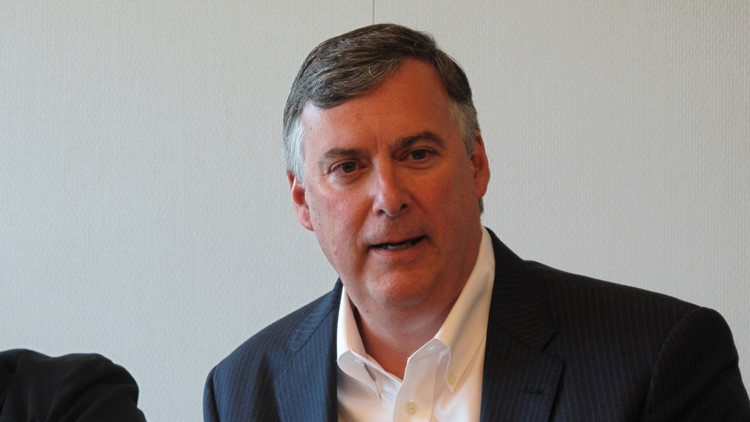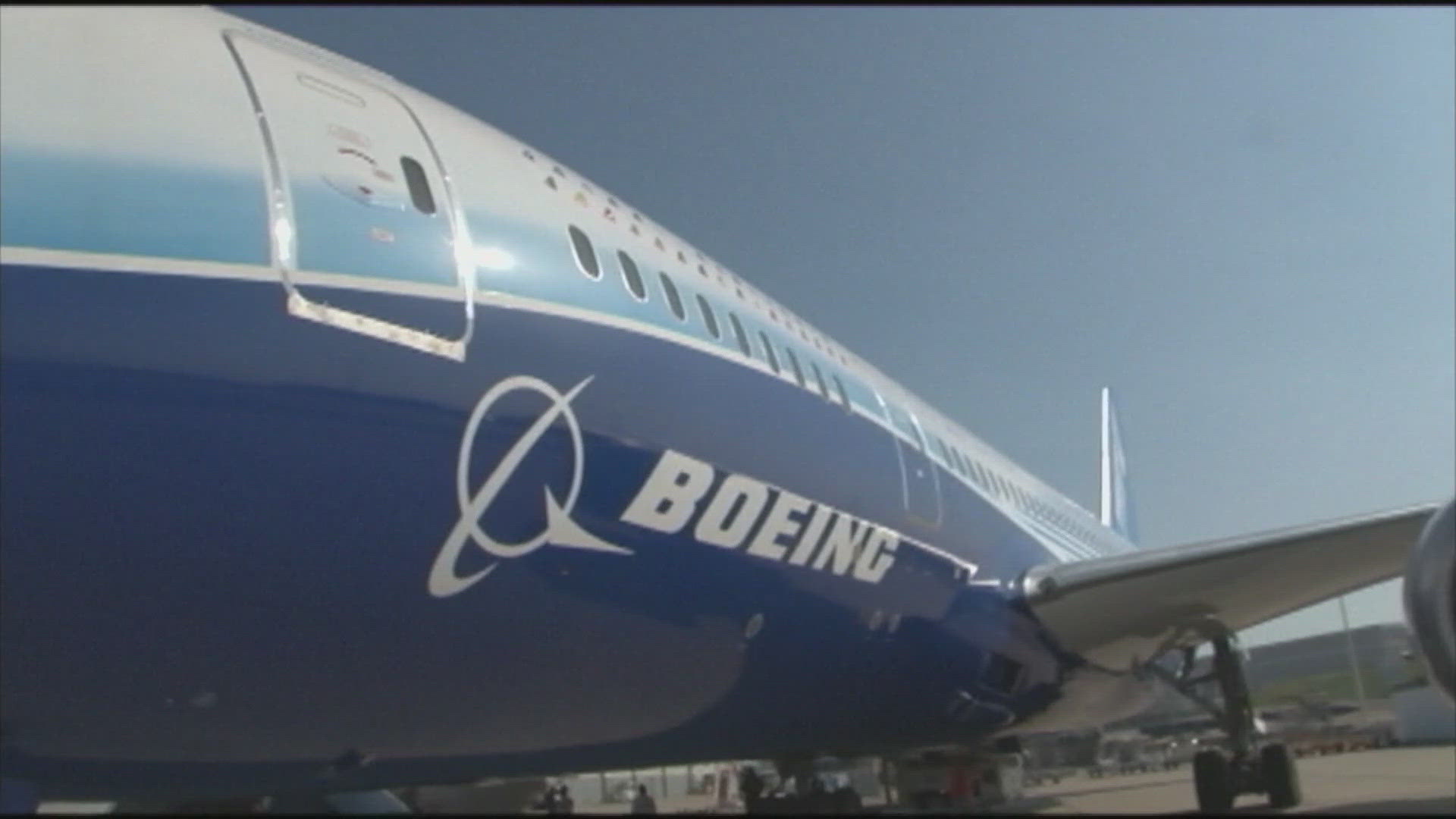In his first interview since taking over the top job at Boeing’s airliner business, Kevin McAllister reflects on time spent listening to employees on the factory floor to Boeing’s place in an increasingly competitive industry.
“I grew up in Bethlehem, Pennsylvania. Steel town. I learned what happened when Bethlehem lost competitiveness in the market,” McAllister said, referring to a painting of the now defunct steel mill that hangs as a motivator back in his office.
McAllister is different from previous airliner division chiefs in at least one key aspect. He is the first Chief Executive Officer of Boeing Commercial Airplanes to come from outside of Boeing. He spent 27 years at General Electric and last served as president and chief executive of GE Aviation Services helping airlines manage more than 34,000 GE and CFM jet engines.
As Boeing’s new commercial airplanes CEO, he spends a lot of time on the shop floor.
“You get a ton of clarity back,” he said. “I think touch time with employees is very important for operating leaders of the company. It is not a one-way street.”
“We have great capability here. We just need to make it better,” McAllister added.
Referring to that steel mill painting, “It’s just a reminder as a company, we need to reinvent every day.”
Affable in person, McAllister says his interaction with employees does come with a heavy dose of both negative and positive feedback.
“I think we have to find the truth, always. That’s my nature,” he said. “I get a lot of notes from employees, and I answer every single one of them.“
“I think you go back and say I hear you,” he continued. “I have found a ton of people in the company who are ready to win.”
McAllister arrived at Boeing in November 2016, taking over the reins from Ray Conner, who rose through Boeing’s ranks.
Conner’s first job was on the factory floor riveting airplanes together, but he soon would come to sell airplanes and eventually to lead a company which has again managed to take back the number one spot from its main competitor, Airbus.
“I love airplanes,” McAllister said, looking back over his 27 years at GE, much of that on the aviation side.
He is flying in a mixed atmosphere of positives pushing at his back but with strengthening headwinds ahead. On the plus side, the company has a backlog of 5,700 airliners to build, most of them 737s. His challenge is a world where his competition is no longer limited to Europe-based Airbus.
Boeing recently pushed for a federal trade case against Canada’s Bombardier. Bombardier landed an order from Delta Air Lines for at least 75 C Series jets, which for now just nibble at the bottom end of the 737 market regarding seating capacity. The case accuses the Canadian company of selling the jets below cost.
“This is about a level playing field,” McAllister said. “A fair playing field.”
Boeing also faces more direct competition from the COMAC 919 within China, a country which is soon expected to become the single largest jet market in the world.
The former GE executive takes over Boeing’s biggest business which is now firmly established on both coasts. It’s 101-year-old base in Puget Sound designs and assembles all airliner models. On the east coast, the company broke ground in 2009 on a second factory to build 787 Dreamliners outside of Charleston, South Carolina.
McAllister appears well aware of the 2013-2014 battles to keep 777 production from leaving Washington. The battle to land the 777X in Everett included continued tax incentives from Washington state along with a hard fought battle with and within the Machinists union for a long-term contract extension. Both moves kept the 777 program from moving to another state.
“I think the investment of a billion dollars in Puget Sound is the right investment to have made,” McAllister said of the new 777X Composite Wing Center and other related expansions now up and running in Everett. The CWC is now making the first parts for the first 777X static test airplane. (Put a link in here to other article and video.)
The first flying 777X is currently scheduled to take off in 2019, with the first jet to carry passengers delivered in 2020. But to keep the assembly line going until then, Boeing is slowing down the production rate of the current model 777 to just five a month. This move is also contributing to job losses. Slots in the so-called production “bridge” have been tough to fill.
“I feel comfortable where we are in rate for the 777,” McAllister said, citing that Boeing has enough orders to maintain five jets a month through 2017 and saying he’s “feeling good” about bridge orders for 2018 and 2019.
One concern is a softening of the market for the world’s biggest planes which include the 777 and 747.
“This has been perpetually on my mind since the day I came in,” McAllister said. He, like other Boeing sales executives interviewed, say the 777X comes at the right time as early 777s delivered in the mid-1990s will soon be replaced.
McAllister sees the future for the 747 largely as a freighter that lacks any real competition. Despite the fact that the plane is being built at a rate of just six jets per year, or a half airplane per month he says, “There are opportunities out there especially as they continue to see recovery in the cargo markets.” He won’t forecast an end to the program that led to the establishment of Boeing’s Everett site and construction of what continues to be the world’s largest building.
“Not a decision we need to sweat over today," McAllister said.
Boeing’s Washington workforce continues to shrink. As of May 25, Boeing officially lists Washington state employment at 68,685.
“I think there’s a lot of ways you can drive cost competitiveness in business. Not all of them involve reduction in force,” McAllister said. He is pushing on data analytics he learned from his years at GE. He points to so-called “digital sprints” to quickly fix spot problems on both the factory floor or in engineering, which would put solutions and computer APPS in the hands of people in 30 days or less.
McAllister said the company needs to be smart about cutting costs, not only to meet the competition but to have the financial reserves needed to build new products such as the NMA or New Midsize Airplane Boeing is now discussing with some 57 airlines.
“I’ve had a pretty exciting six months,” he said.
Boeing would now allow TV cameras to record the group interview with aviation journalists. We are hoping to sit down with the new CEO on camera soon.



